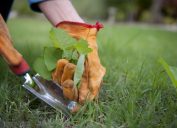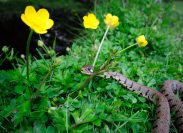If You See This in Your Yard, Don't Mow Without a Mask and Gloves
This dangerous plant must be dealt with using the proper safety precautions.
Even though it takes plenty of hard work, maintaining your yard and garden offers a special kind of enjoyment during the warmer months. Usually, keeping your lawn manicured and set up the right way can even help avoid other problems, such as pest infestations. But certain types of vegetation can make trimming your grass a much more dangerous experience. And if you notice this one plant in your yard, you should take special precautions by putting on a mask and gloves before you start to mow. Read on to see which growths experts warn could pose a serious health risk to home landscapers.
READ THIS NEXT: If You See a Tree That Looks Like This, Call Officials Immediately.
Studies have shown that mowing your lawn can be a relatively risky chore.

Whether it's cleaning out gutters, taking care of overgrown branches, or installing new features, outdoor chores pose no shortage of risks to the homeowners undertaking them. But even a task as seemingly simple as mowing your lawn can be relatively dangerous: According to the Consumer Product Safety Commission's (CPSC) National Electronic Injury Surveillance System, a 2020 analysis of ER visits across the U.S. found that lawnmowers caused an average of 90 deaths per year nationwide, per Newsweek. Not only is that higher than the annual deaths caused by bears, sharks, and alligators, but it's also more than common garden visitors such as snakes and venomous spiders.
And it's not just fatal incidents that occur while trimming the grass. According to a 2018 study by a team of researchers from Johns Hopkins and published in Public Health Reports, an average of 6,394 lawnmower-related injuries are reported in the U.S. annually, including amputations, bone fractures caused by falls, burns, and lacerations, The Washington Post reported.
But now, experts are warning that one plant could make mowing the lawn particularly dangerous if not handled properly.
Experts warn not to mow one type of plant without wearing a mask or gloves.
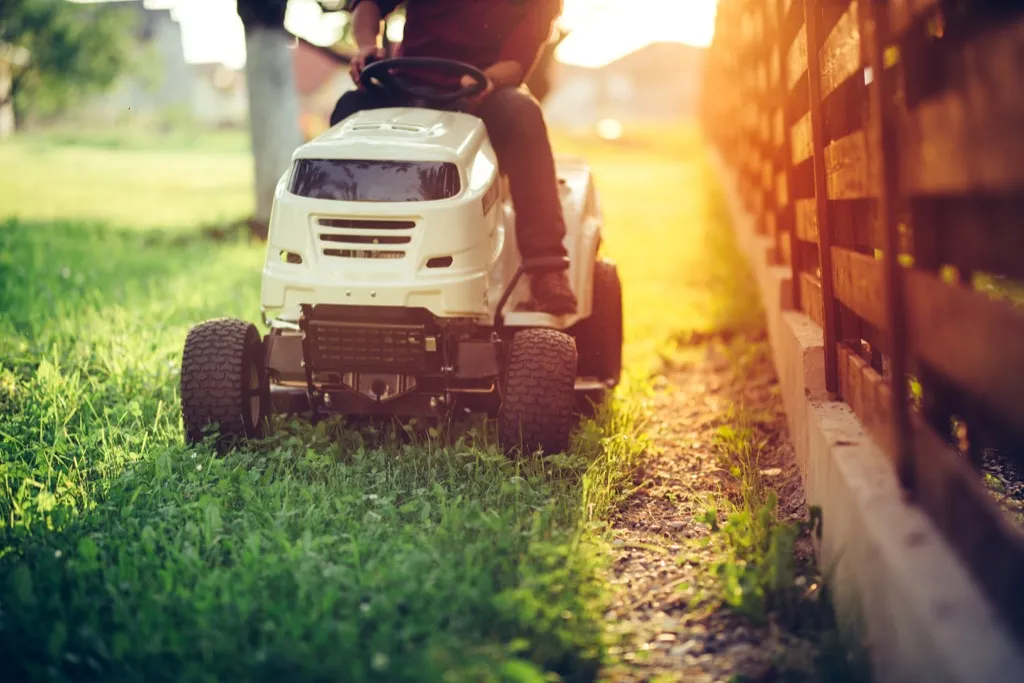
Scanning your yard for potential dangers usually involves keeping an eye out for certain animals or other immediate hazards. But experts warn that you should also be looking for a particular type of flower before you go to mow your lawn: poison hemlock.
According to experts with the Washington-State-based King County Noxious Weeds Blog, the notoriously toxic plant is an invasive species that has spread across the U.S. and poses a health risk to humans and animals alike if eaten. In fact, experts have also warned that it's best to pull the weeds while wearing protective gloves as toxins can also be absorbed through the skin. But while it may seem like running over poison hemlock with your lawnmower would be an easy solution to the problem, you could be putting yourself in danger.
"People have fallen ill after mowing poison hemlock because of breathing in the toxins," the King County experts caution in a blog post. "Definitely wear gloves when handling this plant and use a dust mask when mowing large stands."
RELATED: For more up-to-date information, sign up for our daily newsletter.
The toxic invasive species is often mistaken for other types of edible plants.
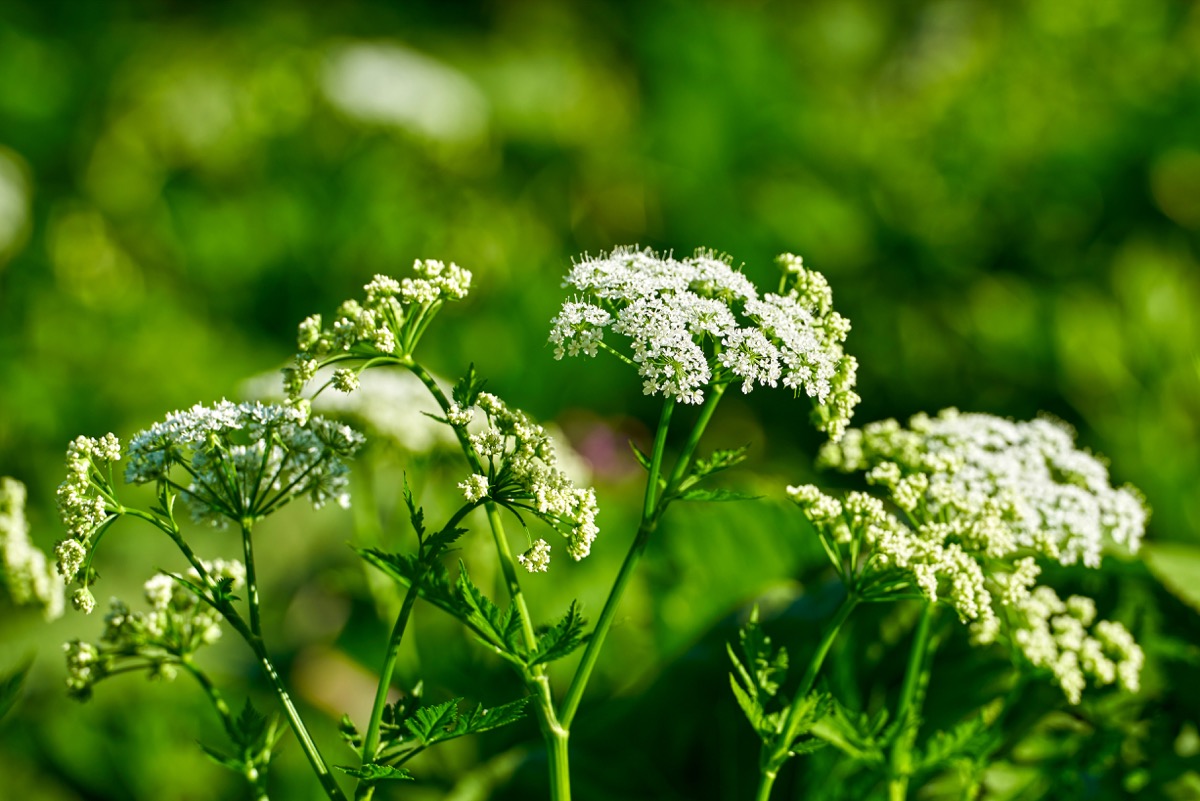
According to experts, poison hemlock poses a particular threat to gardeners who accidentally pick the plant and add it to a homecooked meal without realizing what it is. "People get poisoned because they mistake it for a wild parsley or wild carrot," Sarah Shafer, MD, an assistant professor of emergency medicine at Baylor College of Medicine, told Health, adding that they'll sometimes "pick it out of their garden and put it in a salad" after assuming it's something they've planted.
According to the United States Department of Agriculture (USDA), poison hemlock can begin to cause symptoms within 30 minutes of exposure to its toxins, including nervous trembling, lack of coordination, pupil dilation, and rapid or weak pulse. In some cases, it can lead to death by respiratory paralysis.
But you can still avoid putting yourself in harm's way by learning how to identify the plant before you roll out your mower. According to the King County blog experts, the stems and stalks of poison hemlock have "purple or reddish blotches" that aren't hairy or rough. The plant can also grow four to eight feet tall—or up to twelve feet in some cases—with "many small umbrella-shaped clusters of tiny white flowers rather than one central bloom," adding that the leaves often have "a strong, unpleasant musty smell."
Here's how you can safely get rid of any poison hemlock you find in your yard.
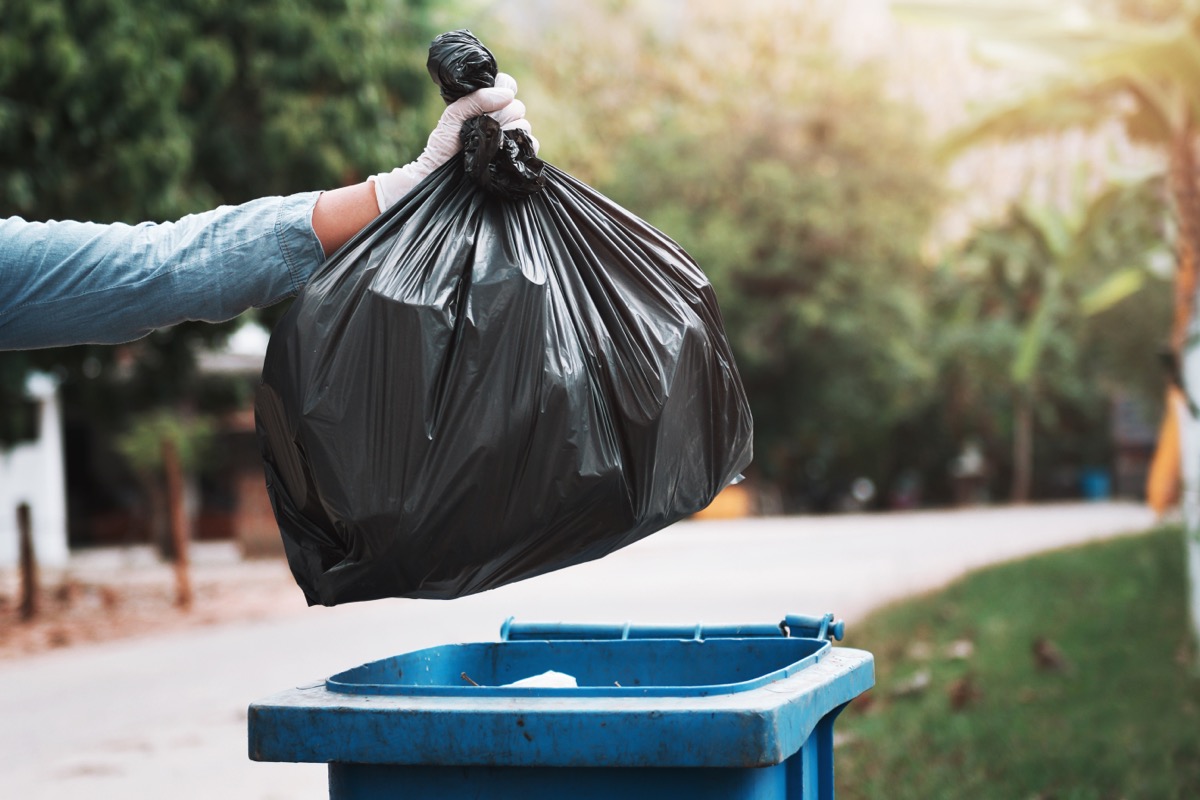
Besides being potentially dangerous, running your mower over patches of poison hemlock likely won't kill the toxic weed for good. Instead, experts with King County Noxious Weeds Blog recommend digging up the entire plant from the root to ensure that it won't resprout again and keeping an eye on the area for the next 18 months to ensure other seeds haven't germinated. And since the entire plant remains poisonous even when dried out, all removed poison hemlock should be placed in garbage bags and discarded along with other household trash, not put into a compost pile. Using plant killers that contain glyphosate can be particularly effective at spot treating, according to The Daily News.
If you've come in contact with poison hemlock or may have run over a large patch in your mower, you should wash any skin exposed to juice from the plant. Any clothing should also be washed separately from any other items right away, per The Daily News.
READ THIS NEXT: This Is the One Weed You Should Never Pull, Experts Say.


